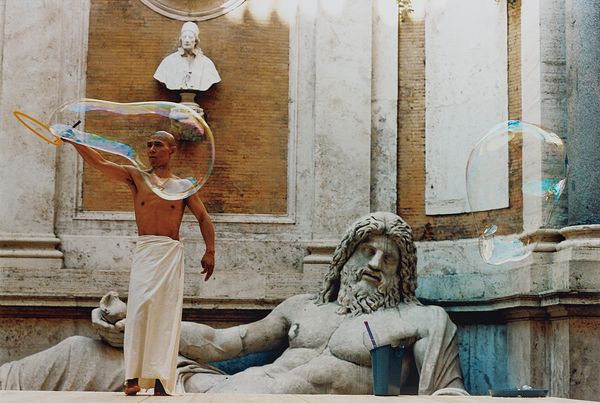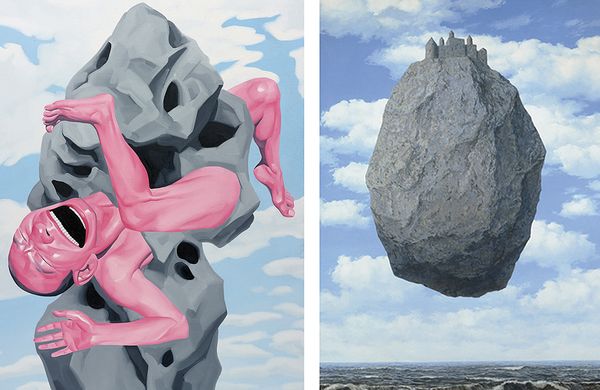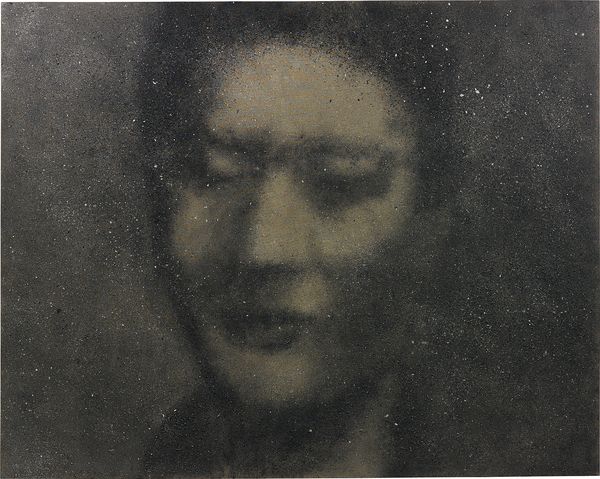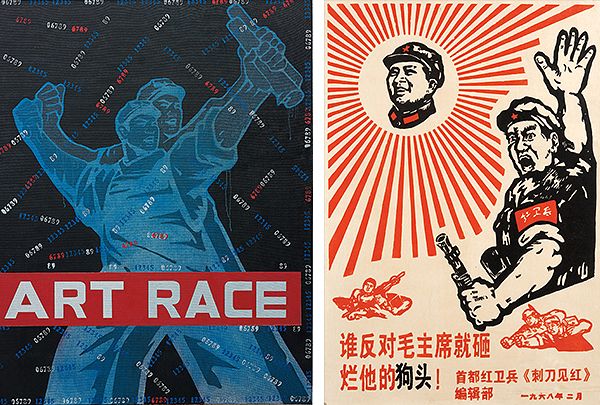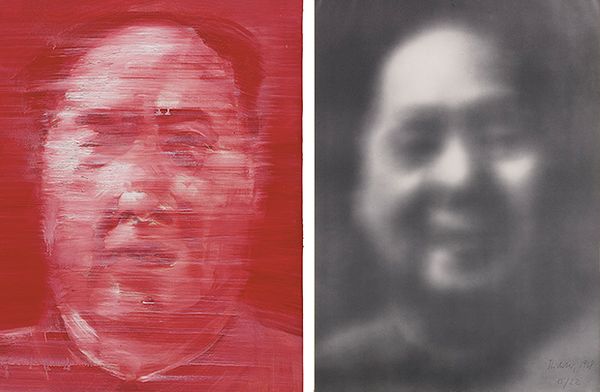Zhang Huan My Rome, 2005. Chromogenic print, flush mounted to aluminium.
Contemporary Chinese art is like a prism. It reflects the viewpoints of diverse individuals exploring the identity of a peoples and their nation after decades of conflict, political turmoil, and absolute cultural isolation are over. Contemporary Chinese artists were born into a very different China: a vast land where freedom of expression and being critical of authority were not permitted.
The Central Cultural Revolution Group, led by Mao Zedong's wife, adopted a Socialist visual program and pitted young people against older generations and ancient traditions in favour of a new artistic aesthetic that strictly served the party line and protected the state from criticism. However, as political tensions and restrictions decreased in the late twentieth century, contact with periodical exhibitions, biennales, and fairs increased. Art schools were reopened and a surge of art incorporating traditional Chinese methods mixed with Western art, impressionism, expressionism, post-modernism and contemporary advertising began to flourish.
(Left) Yue Minjun Untitled (Magritte Stone), 2006; (Right) René Magritte The Castle of the Pyrenees, 1959. Oil on canvas. The Israel Museum, Jerusalem © ADAGP, Paris and DACS, London 2016.
A quintessential aspect of Contemporary Chinese art is the dominance of figural subject matter over abstraction. The figure was reclaimed as a tool for self-expression and as a symbol for the new order within China rather than a fountainhead for the politicized ideologies of Mao and the Socialist agenda. Yue Minjun's self-portrait, Untitled (Magritte Stone), is a prime example of the use of the figure frozen in laughter, which has developed as a trope in the Chinese avant-garde to oppose the sobriety of Socialist iconography. Also evident in this work is the influence of Western artists such as René Magritte and their imagery, as seen for example in The Castle of the Pyrenees (1959).
Zhang Huan Zhang Xiao Mei, 2007. Incense ash, charcoal and resin on canvas.
At the time of the Cultural Revolution, technological advances reduced the effects of distance as a hindrance for communication, yet political extremism still blocked the proliferation of ideas, identities, and media, leaving no room for artistic autonomy. Zhang Huan in My Rome uses figural language, self-portraiture, and the medium of photography, which was not explored by the old regime's artistic agenda, to recapture his own figure and comment on the limitations of sociopolitical isolation. Zhang Huan's Zhan xiao Mei is another excellent example of an artwork using the self as a method for expression and exploration of a new cultural identity for China as this anonymous figure literally emerges from the ashes.
This newfound use for the figure was first developed in Beijing with a strong tendency towards social critique.
(Left) Wang Guangyi Great Criticism: Art Race, 2007; (Right) Propaganda poster from the Chinese Cultural Revolution with Red Guards of the Capital "Bloody Bayonet" Editorial Committee, 1968. Colour lithograph. Private Collection © The Chambers Gallery, London / Bridgeman Images.
This newfound use for the figure was first developed in Beijing with a strong tendency towards social critique: Socialist Realism and its legendary iconography were interlaced seamlessly with contemporary art and Western advertising. Wang Guangyi in Great Criticism: Art Race combines the visual language of propaganda posters with social commentary to express avant-garde notions about the political history of the country. At its core, this new conceptualization of the figure and its prevalence over abstraction focuses on social, political, and psychological changes, notions of identity, personal voice, and collective consciousness.
(Left) Yan Peï-Ming Soleil Rouge III (Mao), 1993; (Right) Gerhard Richter Mao, 1968. Collotype on lightweight card. Museum of Modern Art, New York © Gerhard Richter 2016.
Other artists choose to explore the political history and tumultuous background of the regime by combining propaganda materials with westernized modes of expression. Yan Pei Ming's Soleil Rouge III (Mao) incorporates rapid and thick brushstrokes combined with the iconic red of the Chinese Revolution to depict the father of Chinese Communism, Mao Zedong. The artist achieves the expression of strength and power by using a simple color palette and only the essential materials in order to demonstrate the audience his unique brand of painting merged with performance art.
Other artists choose to explore the political history and tumultuous background of the regime by combining propaganda materials with westernized modes of expression.
(Left) Yan Peï-Ming Pope Innocent X no. 4, 2013; (Right) Diego Velazquez Portrait of Pope Innocent X, 1650. Oil on canvas. Galleria Doria Pamphilj, Rome.
The hybridity of Chinese art is a common aspect amongst artists and demonstrates the massive cultural changes experienced by the nation. Thus, criticism of the old political system, socialist imagery, and ideology combined with a newfound need to nourish individual identities and notions of the self has created a unique and compelling Chinese artistic climate.
